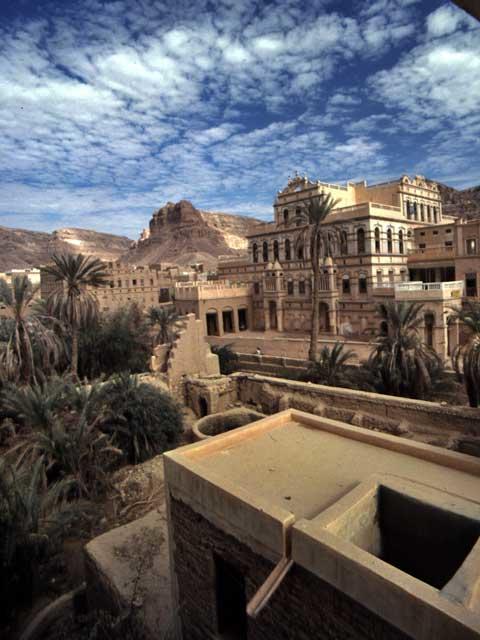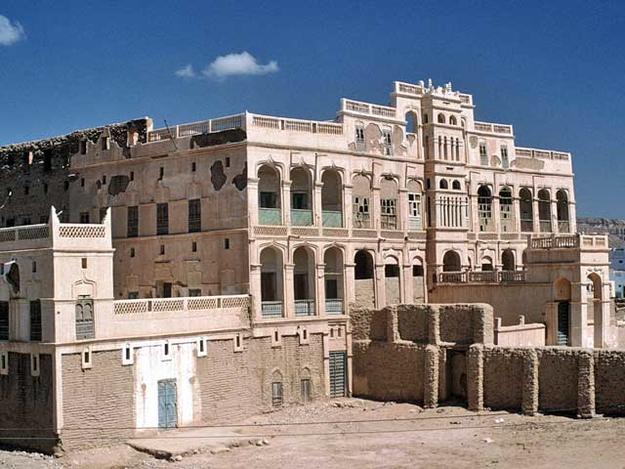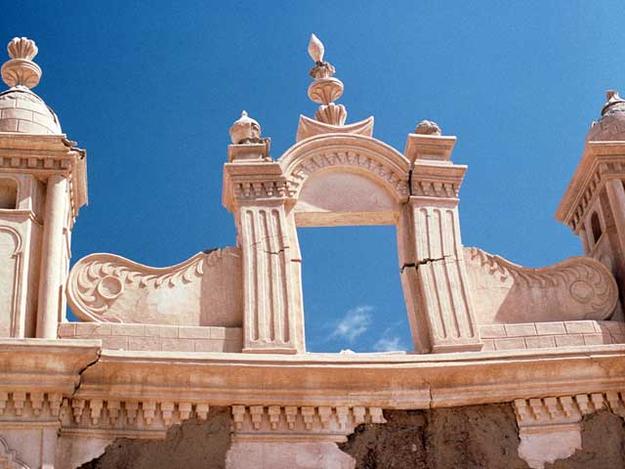2000 and 2002 World Monuments Watch
The palaces of Tarim are among the most intricate and technologically sophisticated mud-brick structures in the world. Their architectural style is an elaborate synthesis of southeast Asian, Neo-Classical, Rococo, and Hadhrami elements, reflecting the role of Tarim as a crossroads of trade between east and west. This historic city is also the theological and academic center of the wadi and features the Al-Awqaf library, a collection of 14,000 religious manuscripts. A 50-meter-high, unreinforced mud-brick minaret, the tallest on the Arabian peninsula, characterizes the city. Although the entire Yemeni territory of Wadi Hadhramaut was declared a World Heritage Site in 1982, preservationists have focused their attention primarily on the nearby walled city of Shibam, leaving the Tarimi palaces in various states of disrepair. The unification of Yemen in 1992 returned ownership of the palaces from the government to private individuals, and, while the majority of the buildings remain in use, many lay neglected by absentee owners. An umbrella organization for the preservation and management of the palaces is planned, as well as the establishment of a Center for Mudbrick Architecture.
Since the Watch
Much was accomplished following Watch listing in 2000 and 2002 by the nominators of the site, including documentation and emergency stabilization of a group of unique mud-brick buildings, and training for personnel from Yemen's General Organization of Antiquities and Museums. The nominators' work has been supported by the Samuel H. Kress Foundation and with funds secured by the American Institute for Yemeni Studies, and was presented at conferences and online. Meanwhile, Yemen's Social Fund for Development and the Ambassadors Fund for Cultural Preservation of the U.S. Department of State supported the restoration of the 'Ishshah Palace, one of Tarim's most significant mud-brick buildings. Unfortunately the city suffered from the catastrophic flooding that struck Yemen in October 2008, which had the heaviest impact on the Hadhramaut region. In response to the flooding major infrastructure improvements were undertaken, but tourism has declined as a result of recent terrorist activity. Tarim was an Islamic Culture Capital for 2010, named by the Islamic Educational, Scientific and Cultural Organization, and it was hoped that this designation would draw visitors back to the area. Meanwhile, steps have been taken for adding Tarim to the World Heritage List. January 2011



